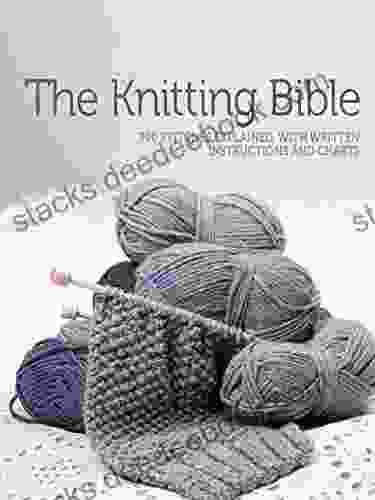Intonation and Timbre Fingerings for the Flute: A Comprehensive Guide for Enhancing Your Performance

The flute, with its captivating sound and unparalleled expressiveness, presents a unique set of challenges to musicians seeking to master its intricacies. Intonation and timbre, two fundamental aspects of flute playing, are crucial for delivering performances that resonate with audiences. This comprehensive guide will delve into the intricacies of intonation and timbre fingerings, providing flutists of all levels with the knowledge and techniques to elevate their playing skills.
Understanding Intonation
Intonation refers to the accuracy of a musical note's pitch. Slight deviations from the intended pitch can significantly affect the overall sound of a piece, creating a sense of disharmony or discomfort. Flutists must develop a keen ear to identify and correct intonation issues, ensuring that each note resonates at its true frequency.
4.3 out of 5
| Language | : | English |
| File size | : | 1817 KB |
| Text-to-Speech | : | Enabled |
| Screen Reader | : | Supported |
| Enhanced typesetting | : | Enabled |
| Word Wise | : | Enabled |
| Print length | : | 92 pages |
| Lending | : | Enabled |
Factors Affecting Intonation
Several factors influence the intonation of a flute, including:
* Embouchure: The shape and position of the player's lips on the flute's mouthpiece directly impact the pitch. * Airflow: The speed and volume of air flowing through the flute determine the pressure and vibration of the air column, affecting the pitch. * Fingerings: The specific combination of keys and holes covered by the flutist's fingers directly dictate the length of the air column, influencing the pitch. * Instrument quality: The design and craftsmanship of the flute can influence its inherent intonation characteristics.
Intonation Fingerings
Flutists have developed specific fingerings to adjust the intonation of certain notes, compensating for variations in embouchure, airflow, and instrument quality. These fingerings involve slight modifications to the standard fingerings, often involving the use of alternate fingerings or half-holing techniques.
Common Intonation Fingerings
* Low B-flat: The standard fingering produces a slightly sharp B-flat. To correct this, use the alternate fingering with the left-hand ring finger on the first key and the right-hand little finger on the trill key. * High C-sharp: The standard fingering tends to be flat. To adjust it, use the alternate fingering with the left-hand thumb on the second key and the right-hand little finger on the trill key. * High D: The standard fingering can be sharp. To lower it, apply slight downward pressure on the left-hand index finger and half-hole the right-hand little finger.
Understanding Timbre
Timbre, also known as tone color, refers to the unique sound quality of a musical instrument or voice. It is determined by the harmonic content of the sound, which varies depending on the shape and size of the instrument, the materials used in its construction, and the playing technique.
Factors Affecting Timbre
* Embouchure: The shape and position of the player's lips on the mouthpiece influence the airflow and harmonic content, affecting the timbre. * Airflow: The speed and volume of air flowing through the flute determine the resonance and overtones, shaping the timbre. * Fingerings: Different fingerings can produce different harmonic combinations, altering the timbre of a note. * Vibrato: The controlled variation in pitch and volume adds a distinctive character to the sound, contributing to the timbre.
Timbre Fingerings
Flutists can utilize various fingerings to modify the timbre of their instrument, creating a range of expressive effects. These fingerings involve experimenting with different key combinations and airflows.
Common Timbre Fingerings
* Bright timbre: To produce a brighter tone, increase the airflow and use fingerings with more open holes, such as the alternate fingering for high C-sharp. * Dark timbre: To create a darker tone, decrease the airflow and use fingerings with more covered holes, such as the standard fingering for high D. * Breathiness: By intentionally blowing air across the edge of the mouthpiece, flutists can create a breathy effect, adding warmth and intimacy to their sound. * Articulation: Using tonguing and other articulation techniques can enhance the clarity and character of the sound, contributing to the overall timbre.
Practical Exercises for Improving Intonation and Timbre
Regular practice is essential for developing proficiency in intonation and timbre control. Here are some exercises to help you refine your skills:
* Drone practice: Play long tones with a drone accompaniment, using a tuning device to monitor your intonation. * Harmonic exercises: Focus on playing harmonics, which require precise intonation to produce clear notes. * Scales and arpeggios: Practice playing scales and arpeggios slowly and deliberately, paying attention to the intonation of each note. * Interval exercises: Play intervals of various sizes, such as octaves, fifths, and thirds, to enhance your ear training and intonation. * Improvisation: Experiment with different fingerings and airflows while improvising, allowing yourself to explore the range of timbres your flute can produce.
Intonation and timbre are two essential elements of flute performance that can significantly enhance a flutist's expressiveness and artistry. By understanding the principles of intonation and timbre, mastering various fingerings, and engaging in regular practice, flutists can refine their skills, deliver performances of exceptional quality, and captivate audiences with their musicality.
4.3 out of 5
| Language | : | English |
| File size | : | 1817 KB |
| Text-to-Speech | : | Enabled |
| Screen Reader | : | Supported |
| Enhanced typesetting | : | Enabled |
| Word Wise | : | Enabled |
| Print length | : | 92 pages |
| Lending | : | Enabled |
Do you want to contribute by writing guest posts on this blog?
Please contact us and send us a resume of previous articles that you have written.
 Book
Book Novel
Novel Text
Text Story
Story Paperback
Paperback E-book
E-book Paragraph
Paragraph Bookmark
Bookmark Bibliography
Bibliography Preface
Preface Synopsis
Synopsis Footnote
Footnote Manuscript
Manuscript Codex
Codex Tome
Tome Library card
Library card Narrative
Narrative Biography
Biography Memoir
Memoir Encyclopedia
Encyclopedia Dictionary
Dictionary Thesaurus
Thesaurus Resolution
Resolution Librarian
Librarian Borrowing
Borrowing Archives
Archives Periodicals
Periodicals Research
Research Lending
Lending Reserve
Reserve Journals
Journals Reading Room
Reading Room Interlibrary
Interlibrary Literacy
Literacy Study Group
Study Group Thesis
Thesis Storytelling
Storytelling Awards
Awards Theory
Theory Textbooks
Textbooks C Ernest Fayle
C Ernest Fayle Michael Mccallion
Michael Mccallion Hilton Pashley
Hilton Pashley Gary Cleaver
Gary Cleaver Ashley Farley
Ashley Farley Eden Davies
Eden Davies Matthew Kroenig
Matthew Kroenig Dai Pryce
Dai Pryce Russell Madden
Russell Madden Stephen T Murphy
Stephen T Murphy Gerald Milnes
Gerald Milnes Stephanie Barron
Stephanie Barron Barbara O Connor
Barbara O Connor Marty M Engle
Marty M Engle Julie Anne Long
Julie Anne Long David Cox
David Cox Jonathan Manthorpe
Jonathan Manthorpe Lynne Barr
Lynne Barr Nicole C Engard
Nicole C Engard Zach Beach
Zach Beach
Light bulbAdvertise smarter! Our strategic ad space ensures maximum exposure. Reserve your spot today!

 Christian CarterUnlocking Success in Telemarketing and Cold Calling for the Self-Employed
Christian CarterUnlocking Success in Telemarketing and Cold Calling for the Self-Employed Henry HayesFollow ·9.4k
Henry HayesFollow ·9.4k Paulo CoelhoFollow ·9.8k
Paulo CoelhoFollow ·9.8k Devin CoxFollow ·5.7k
Devin CoxFollow ·5.7k Reed MitchellFollow ·6.7k
Reed MitchellFollow ·6.7k Ethan MitchellFollow ·12.7k
Ethan MitchellFollow ·12.7k Galen PowellFollow ·10.3k
Galen PowellFollow ·10.3k Truman CapoteFollow ·17.8k
Truman CapoteFollow ·17.8k Eli BrooksFollow ·13.2k
Eli BrooksFollow ·13.2k

 Amir Simmons
Amir SimmonsMore Zeal Than Discretion: A Closer Look at the Risks and...
Enthusiasm is often seen as a positive...

 Wayne Carter
Wayne CarterYear of the Dog: American Poets Continuum 178
Year of the Dog is a...

 David Foster Wallace
David Foster WallaceThe Constitution of the State of New York: A...
The Constitution of the...

 Harvey Bell
Harvey BellSmall Cetaceans of Japan: Exploitation and Biology
Small cetaceans, including...

 Blake Bell
Blake BellEffortless Elegance: A Comprehensive Guide to Captivating...
In the realm of crocheting,...
4.3 out of 5
| Language | : | English |
| File size | : | 1817 KB |
| Text-to-Speech | : | Enabled |
| Screen Reader | : | Supported |
| Enhanced typesetting | : | Enabled |
| Word Wise | : | Enabled |
| Print length | : | 92 pages |
| Lending | : | Enabled |












